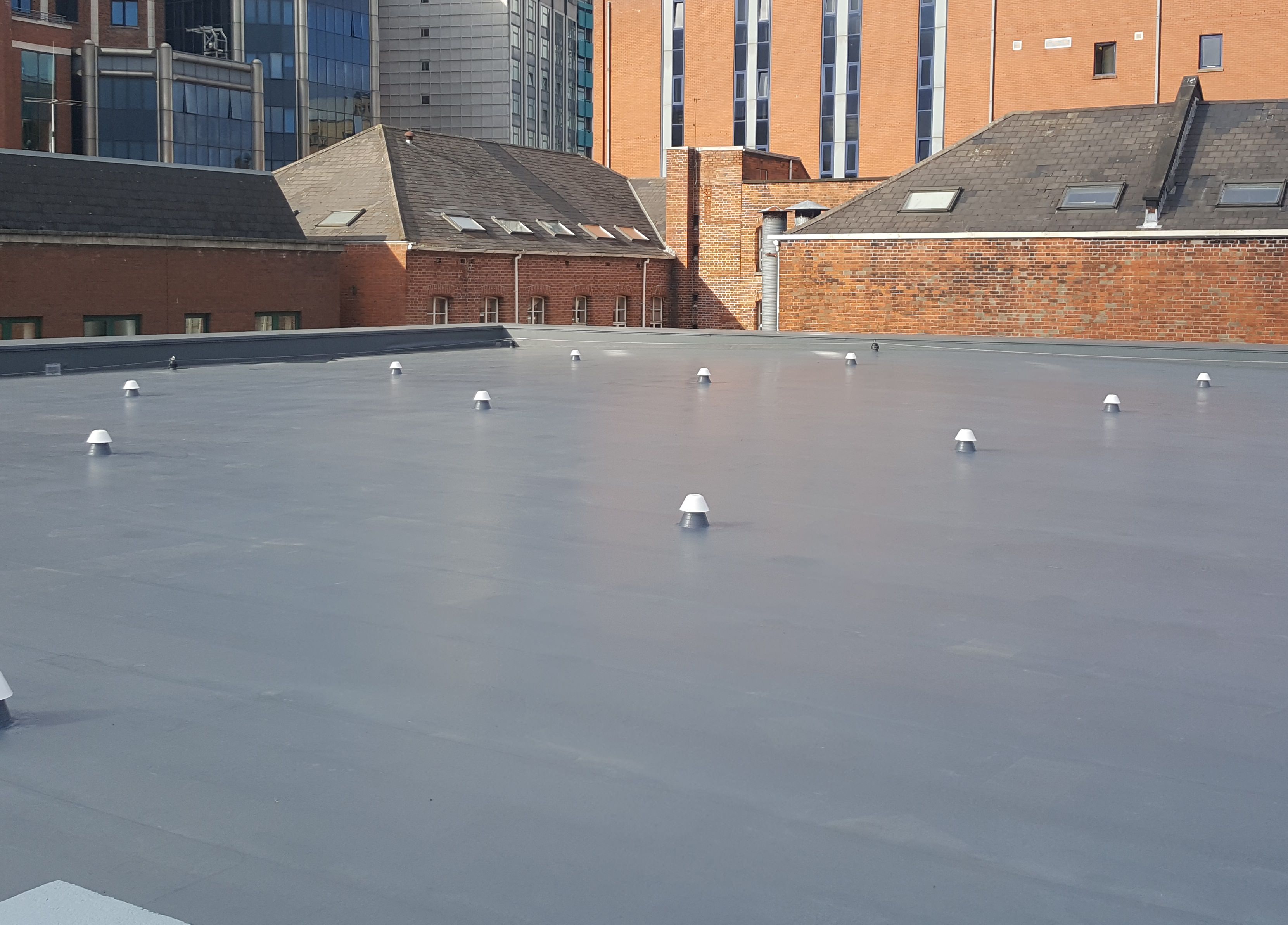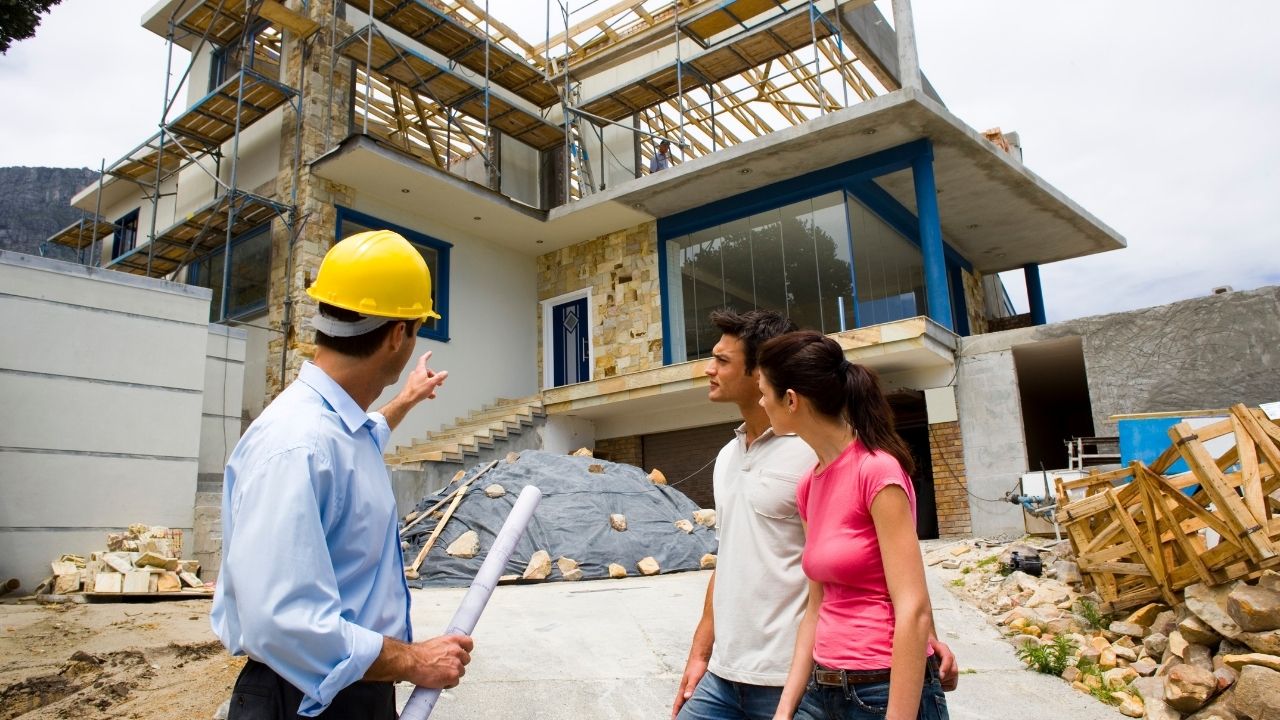
The slope of a roof is how steep or flat it is. A steep slope will have a slope of at least one-third. However, it is possible to be steeper. A typical steep-sloped roof has a pitch of nine to ten inches. It may also require additional fasteners or materials. Read on for more information about roof slopes. These are just a few.
The International Residential Code has requirements regarding the types and styles of roofing materials. These guidelines specify minimum roof slope requirements for various types of roofing materials. Below, you'll find the minimum slopes for each type. This table is based upon the International Building Code. It is the basis for almost all American building codes. Learn more about different roofing systems in our article on determining slopes.

Your roof's slope should be no less than 2:12 to achieve the best aesthetic appeal. You can increase or decrease the slope of your roof as needed, depending on your climate. The lower the angle, the steeper the pitch. For example, a roof that is four inches in slope would require a roof slope of at least two and one-half to three-and-a-half inches. For proper insulation, a 6-inch-sloped house will need a steeper pitch.
Low-pitch roofs are generally the best for residential buildings. They are easy to install, and they provide excellent protection from UV rays. They are more likely to leak, and will need to be checked regularly. You can repair a roof that is too steep. For residential homes, the medium-sloped roof is the best choice. There are two types flat-sloped roofs, high-sloped as well as low-sloped.
There are two basic types: high pitch and low-slope roofs. As it will shed snow and water more efficiently, the former is better for your house. A low-slope roof allows your home to breathe better. However, a steep-pitch roof would not be suitable for a covered porch. If you have such conditions, you should choose a steeper pitch roof for the rest.

Low-pitch roofs can also leak, as can high-pitched roofs. These leaks can occur due to temperature fluctuations, sunlight exposure, or a gradual sagging in the wood structure. It is vital to inspect low-pitch and high-pitch roofs at least once a year. Apart from fixing any leaks, it is important to inspect the drainage system. Your roofing drainage system should be inspected annually.
Your home's slope will determine the type of roof that you choose. If the slope is high-sloped, then you should choose a higher-sloped roof. While it will be more cost-effective, it will also be more efficient. A lower pitch roofing system is best for low-sloped roofs. You have many options if you are looking to install an extremely steep-sloped metal roofing system.
FAQ
Is there anything I can doto save money on my home renovation?
You can save money by doing most of the work yourself. Reduce the number and frequency of people you hire for the renovation. You can also find ways to reduce costs for materials during the renovation.
Are you able to live in a renovated house?
Yes, I can live in my house while renovating it.
You can live in a house that is being renovated while you are renovating it. The length of construction takes will determine the answer. If the renovation lasts less then two months, then it is possible to live in your home while it is being constructed. You can't live there if your renovation project takes more than two months.
Because of the possibility of falling objects, you shouldn't live in your home while a major construction project is underway. You could also suffer from noise pollution and dust caused by the heavy machinery used on the job site.
This is especially true for multi-story houses. If this happens, the sound and vibration caused by the construction workers can cause significant damage to your home and contents.
As I mentioned before, while your home is being remodeled, you'll have to manage the inconveniences of living in temporary shelters. This means that your home won't provide all the amenities you need.
While your dryer and washing machine are being repaired, you won't be able use them. You will also have to put up with the smell of paint fumes and other chemicals as well as the loud banging sounds made by the workers.
These factors can cause stress and anxiety in you and your family. Therefore, it is important to plan ahead in order not to feel overwhelmed by the situation.
To avoid costly mistakes, do your homework before you make any decisions about renovating your home.
A reputable contractor can also be of assistance to you in order to make sure everything runs smoothly.
What room should I remodel first?
The heart of any house is the kitchen. The kitchen is where you will spend the majority of your time cooking, entertaining, or just relaxing. If you're looking to make your kitchen more functional, attractive and beautiful, this is the place for you!
The bathroom is also an important part of any home. It is a place where you can feel at ease and privacy as you perform daily tasks such as brushing teeth, bathing, shaving, and getting ready for sleep. Consider adding storage to these rooms and installing a tub instead of a bathtub. You may also want to replace old fixtures with modern ones.
How long does it take for a home to be renovated?
It all depends upon the size of your project and how much time it takes. The average homeowner works on the project for three to six hour a week.
Statistics
- They'll usually lend up to 90% of your home's "as-completed" value, but no more than $424,100 in most locales or $636,150 in high-cost areas. (kiplinger.com)
- It is advisable, however, to have a contingency of 10–20 per cent to allow for the unexpected expenses that can arise when renovating older homes. (realhomes.com)
- According to the National Association of the Remodeling Industry's 2019 remodeling impact report , realtors estimate that homeowners can recover 59% of the cost of a complete kitchen renovation if they sell their home. (bhg.com)
- The average fixed rate for a home-equity loan was recently 5.27%, and the average variable rate for a HELOC was 5.49%, according to Bankrate.com. (kiplinger.com)
- Most lenders will lend you up to 75% or 80% of the appraised value of your home, but some will go higher. (kiplinger.com)
External Links
How To
How do I plan a whole-house remodel?
Planning a whole-house remodel requires planning and research. There are many things you should consider before starting your project. The first thing you need to decide is what kind of home improvement you want to make. You can choose from a variety of categories, such as kitchen or bathroom, bedroom, living space, or living room. Once you've chosen the category you want, you need to decide how much money to put towards your project. If you do not have any previous experience in working with homes, it is best that you budget at least $5,000 per bedroom. If you have some previous experience, you may be capable of getting away with a lower amount.
Once you know how much money your budget allows you to spend, then you will need to decide how big a job it is you are willing to take on. A small kitchen remodel will not allow you to install new flooring, paint the walls, or replace countertops. You can do almost everything if you have enough cash for a full-scale kitchen renovation.
Next, look for a contractor with experience in the type or project you are looking to tackle. You will be able to get great results and avoid a lot more headaches down in the future. Once you have hired a contractor, gather materials and other supplies. It depends on how large your project is, you might need to buy everything made from scratch. There are many stores that offer pre-made products so it shouldn't be difficult to find what you need.
Once you have all of the necessary supplies, you can start making plans. The first step is to make a sketch of the places you intend to place furniture and appliances. The next step is to design the layout of the rooms. It is important to allow for electrical and plumbing outlets. Also, try to put the most used areas near the front door so that visitors can easily access them. Final touches to your design include choosing the right colors and finishes. In order to avoid spending too much money, stick to neutral tones and simple designs.
Now it's time to build! It's important that you check the codes in your area before you start construction. Some cities require permits. Others allow homeowners to build without permits. First, remove all walls and floors. To protect your flooring, you will lay plywood sheets. Next, you'll attach the wood pieces to the frame of your cabinets. Lastly, you'll attach doors and windows to the frame.
There will be some finishing touches after you are done. You'll likely want to cover any exposed wires and pipes. You will need to use tape and plastic sheeting for this purpose. You'll also want to hang pictures and mirrors. Make sure to keep your work area neat and tidy.
If you follow these steps, you'll end up with a beautiful, functional home that looks great and saves you lots of money. You now have the knowledge to plan a complete house remodel.